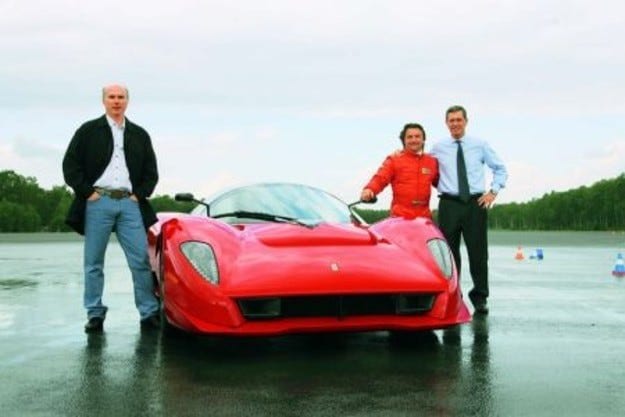
Test drive Ferrari P 4/5: My name is red

The unique Ferrari logo and bespoke Pininfarina bodies are among the rarest and most prized by collectors. With the creation of the new Glickenhaus P 4/5, Italian craftsmen add a contemporary gem to the collection.
If we allow ourselves to delineate the innermost dreams of the most ardent and enlightened fan of the Maranello brand, then there will be a limited number of badges, such as 357 MM Berlinetta Aerodinamica Ingrid Bergman from 1954, 257 GTS / 4 NART Spider from 1967, 250 LM from 1963 , P4 from 1967 and in all likelihood the last cry of Enzo Ferrari. For people who cannot boast of such a collection, it may be worth paying attention to the career of James Glickenhaus.
Screenwriter Glickenhouse is best known as the director and producer of obscure blockbuster action films this side of the ocean such as Blue Jean Cop, Massacre of the Innocents and McBain. Of course, fame comes with a significant financial income, which in turn allows him to amass a truly impressive collection of classic cars. “I have a Ferrari 166 Spider Corsa, a 1947 model piloted by Franco Cortese, one of three 330 P3/4 Spyders in the top three spots in the Daytona, and a P4/412 with frame number 0854 ordered by a British importer. "Maranello Concessionaires," Glickenhaus lists his treasures in a slightly detached New York intellectual tone. In fact, Glickenhaus' only unfulfilled automotive dream until recently was owning the absolute Ferrari - this Hyper-Ultra-Berlinettissima with an updated version of the Enzo-approved format and content borrowed from the best of Ferrari's current lineup.
From the very beginning, Glickenhaus understood that the order to create such a unique work based on a Ferrari model could have only one addressee - the Turin stylists Pininfarina, whose roots of fame go back to those created in the 50s of last year. Single copies of the century were intended for famous people. Glickenhaus's order, given to the team of chief designer Andrea Pininfarina and special projects manager Paolo Garella, is in itself something unusual - the car must look like a P4, have Enzo Ferrari performance and receive an American homologation. for example serial F430.
Then the American collector is flooded with such a river of sketches, concept designs, computer graphics and invitations from Italian designers to gliders that at some point he begins to wonder if his name is James, not Enzo ... The founder of Ferrari is involved in the project not only as a concept patron - a car with his name fills a unique work of flesh and blood. From the outset, it is clear that the only suitable technical platform is the Enzo Ferrari top model, as the task places demands on the technical level of the Glickenhaus P 4/5, as close as possible to professional sports. A physical "donor" was relatively easily and quickly found at the California dealer of Ferrari - Enzo, manufactured in accordance with the requirements of certification in the USA, could not reach the potential buyer for whom it was intended, since the latter suffered financial weakness due to failure . currency speculation in South America.
Glickenhaus immediately bought the car and sent it to the Pininfarina development center in Cambiano, near Turin, along with a Ferrari P4 racing prototype from his collection – the idea being that the designers would get a complete and clear idea straight from the original. One hundred hours in a wind tunnel, a full-size clay model and a cost of several million dollars later, Pininfarina's new Ferrari P4/5 has been fully driven and is on the test track at the CERAM proving ground near Paris. The bodywork of the Enzo has been replaced by Pininfarina on a 200 specially built for this purpose and unique in terms of the details of its application.
As soon as the P4 / 5 starts, preceded by a light touch of first gear, the program engages to travel back in time to motorsport. On the far forward transparent dome is projected an immediate feeling of that era in the history of the Maranello brand, when Ferrari could not only afford two or three cars in Formula 1, but also participate with four or five prototypes in the track championship, keeping a permanent staff of about ten factory pilots ...
The turn of the polygon suddenly takes the form of a bend in the famous Daytona oval, and the driver discreetly plays the role of pilots of those times, in whose eyes James Glickenhouse, Andrea Pininfarina and Paolo Forgelo Garella, standing by the track, look like him. from the 60s.
Text: Eckhard Ible
Photo: Hans-Dieter Zeifert

